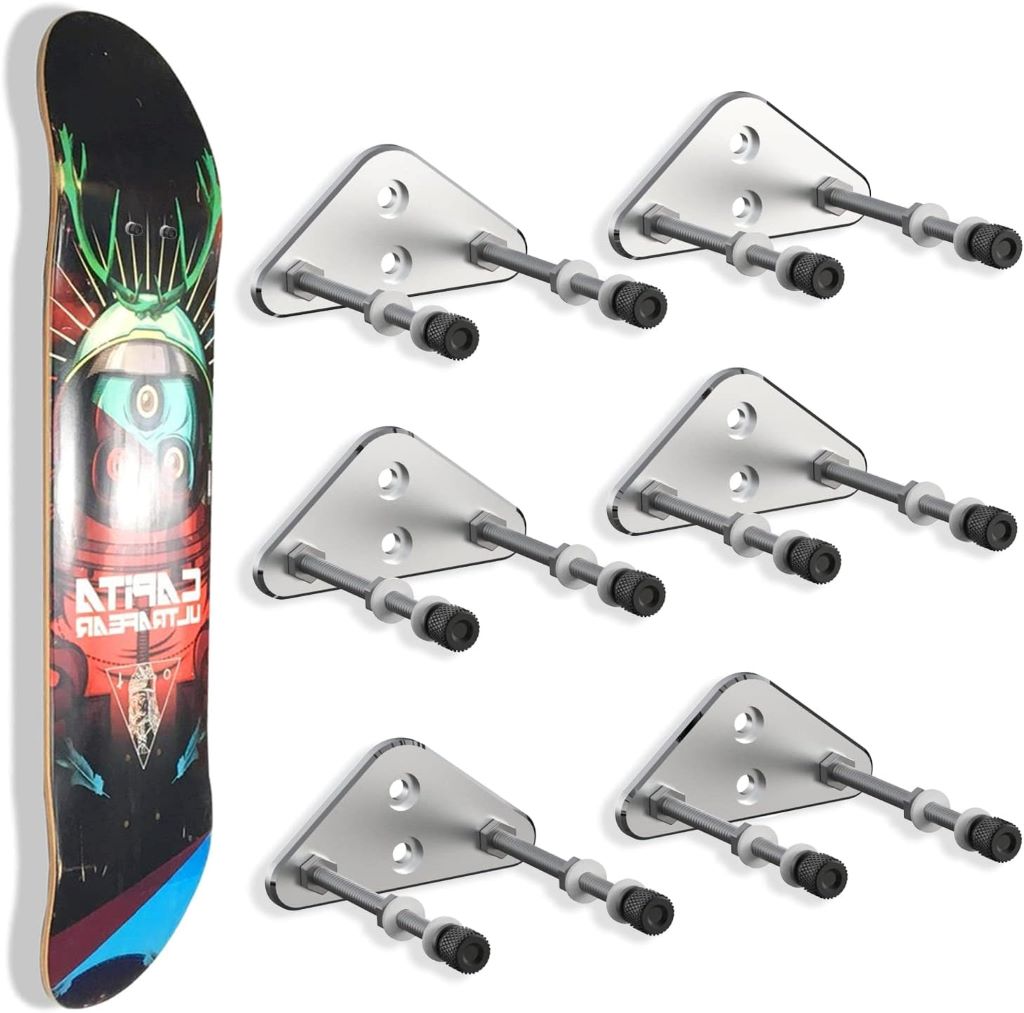Aluminum trucks have become increasingly popular in the skateboarding world, sparking a debate about their performance compared to the traditional king: steel. This article delves deep into the characteristics of aluminum trucks, exploring their pros, cons, and ideal use cases to help you decide if they’re the right choice for your skateboarding style.
Understanding Skateboard Trucks
Before we dive into the specifics of aluminum, let’s recap the crucial role trucks play in skateboarding. These complex components act as the steering and suspension system of your board, connecting the wheels to the deck and allowing you to turn, grind, and perform tricks.
Trucks are typically made of an axle, hanger, baseplate, kingpin, and bushings. The material used for these parts, particularly the hanger and baseplate, significantly influences the truck’s overall performance.
Aluminum Trucks: Lightweight and Responsive
Aluminum trucks are renowned for their lightweight nature. This reduced weight translates to several noticeable benefits:
- Increased Ollie Height: Lighter trucks require less effort to lift, enabling higher ollies and easier execution of aerial tricks.
- Enhanced Board Feel: With less mass weighing down the board, you gain a more responsive and connected feel, improving overall control.
- Reduced Fatigue: A lighter setup can lessen strain on your legs and feet, especially during longer skate sessions or when performing demanding tricks.
Beyond weight reduction, aluminum trucks offer distinct advantages:
- Durability: While lighter, modern aluminum alloys used in trucks are surprisingly durable and can withstand the impacts of regular skateboarding.
- Corrosion Resistance: Aluminum naturally resists corrosion, making it a good choice for skaters who frequently ride in wet conditions or humid environments.
- Aesthetic Appeal: Aluminum trucks often feature sleek designs and various color options, adding a touch of style to your setup.
Potential Drawbacks of Aluminum Trucks
While aluminum trucks offer many advantages, some potential drawbacks are worth considering:
- Stiffness: Aluminum’s inherent stiffness can transmit more vibrations from the ground, resulting in a harsher ride compared to steel trucks. This can be particularly noticeable on rough surfaces.
- Durability Concerns (in specific cases): While generally durable, aluminum trucks might be more susceptible to bending or cracking under extreme stress, especially for heavier riders or those who perform very high-impact tricks.
- Price: Aluminum trucks can sometimes be more expensive than comparable steel options.
Aluminum vs. Steel Trucks: A Head-to-Head

To better understand the differences, let’s compare aluminum and steel trucks across key performance factors:
| Feature | Aluminum Trucks | Steel Trucks |
| Weight | Lighter | Heavier |
| Durability | Generally good | Excellent |
| Stiffness | Stiffer | More flexible |
| Responsiveness | More responsive | Less responsive |
| Price | Can be higher | Generally lower |
| Grind Feel | Can feel slippery | More predictable |
Export to Sheets
When Are Aluminum Trucks a Good Choice?
Considering the pros and cons, aluminum trucks are best suited for specific skateboarding styles and preferences:
- Street Skating: The lightweight and responsive nature of aluminum trucks shines in street skating, facilitating quick flips, precise landings, and technical maneuvers.
- Vert Skating: Lighter trucks can help achieve greater heights in vert ramps and enhance aerial rotations.
- Beginners: The improved board feel and reduced weight can make learning easier and more enjoyable for beginners.
However, steel trucks might be a better option if:
- You prioritize durability above all else.
- You prefer a more stable and predictable feel, especially for grinding.
- You ride primarily on rough terrain.
Choosing the Right Aluminum Trucks
If you’ve decided to give aluminum trucks a try, here are some factors to consider:
- Truck Brand: Reputable brands like Independent, Thunder, and Venture offer high-quality aluminum options with varying geometries and designs to suit different preferences.
- Truck Size: Select the appropriate truck size based on your deck width for optimal performance and wheel clearance.
- Bushing Hardness: Experiment with different bushing hardnesses to fine-tune your truck’s responsiveness and turning characteristics.
People Also Loved: Skateboards vs. Cruisers vs. Longboards: Picking Your Perfect Ride
Tips for Using Aluminum Trucks
- Proper Assembly: Ensure your trucks are correctly assembled and tightened to prevent wheel bite and ensure stability.
- Regular Maintenance: Periodically check your trucks for any signs of wear or damage, and replace bushings as needed.
- Mindful Grinding: Be aware that aluminum trucks may feel different when grinding, requiring some adjustments to your technique.
You Might Enjoy: Longboard Skateboard Wheels: The Ultimate Guide
Conclusion
Aluminum trucks offer a unique blend of lightweight performance, responsiveness, and durability, making them an excellent choice for many skateboarders. By understanding their characteristics and considering your individual needs, you can make an informed decision and elevate your skateboarding experience.
Remember, the best truck material ultimately depends on your personal preferences and riding style. Don’t hesitate to experiment with both aluminum and steel options to discover what works best for you. Happy skating!




